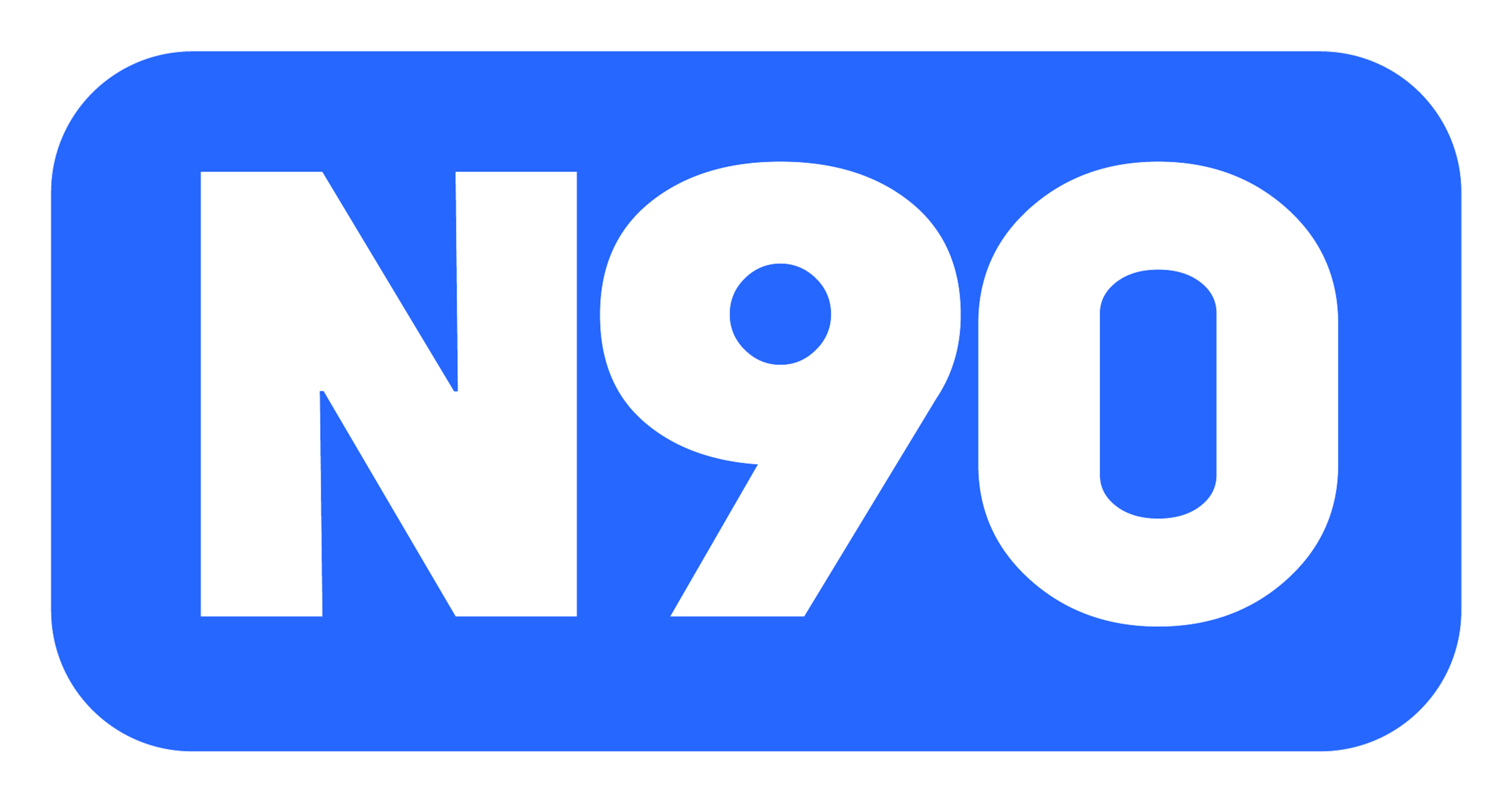Small and medium-sized enterprises (SMEs) in the Philippines make up 99% of all businesses, yet face a staggering $221 billion funding gap, one of the highest in Asia-Pacific. With only $15 billion in formal SME credit available, many business owners are left searching for practical ways to bridge cash flow gaps or fund urgent opportunities.
In such requirements, Bridging loans can appear to be a fast, short-term solution, offering quick access to funds. However, they often come with high interest rates and strict collateral requirements, making them less than ideal for sustainable growth.
In this article, you'll explore the best Bridging Loan Alternatives available to Filipino SMEs. These options go beyond high-interest, collateral-heavy bridging loans—providing smarter, more flexible financing solutions for businesses navigating cash flow gaps or urgent capital needs.
What is a Bridging Loan?
A bridging loan is a short-term financing option that helps businesses manage urgent cash needs while waiting for long-term funding or a key transaction to finalize. Here's how it works and why SMEs consider it:
- Purpose: Used to cover immediate expenses such as inventory purchases, operational gaps, or time-sensitive opportunities.
- Loan Term: Typically repaid in a single lump sum within 6 to 18 months.
- Collateral: Usually secured against tangible assets like property, equipment, or invoices.
- Speed: Funds are often disbursed within a few business days, making it suitable for urgent requirements.
- Exit Strategy: Lenders require a clear repayment plan—often from selling an asset, receiving a large payment, or securing permanent financing.
- Interest Rates: Generally higher than traditional loans due to the short-term, high-risk nature.
While bridging loans are commonly associated with property deals, SMEs also use them to handle short-term working capital needs or unexpected financial challenges.
However, it’s crucial to consider why alternatives to bridging loans might be more suitable in the long run.
Why Consider Alternatives to Bridging Loans?
While bridging loans can provide fast access to capital, they often come with significant trade-offs for SME owners like you. High interest rates, substantial collateral requirements, and short repayment periods can put pressure on your cash flow and increase financial risk. These loans may also involve complex approval processes and hidden fees, making them less accessible or practical for many small businesses.
Given these limitations, it’s important to explore other financing options that offer more flexibility, lower costs, and terms better suited to your business needs.
Best Bridging Loan Alternatives for SMEs in the Philippines
These alternatives can provide the capital you need for various purposes, from managing daily operations and expanding your inventory to investing in new equipment or pursuing growth opportunities, often with more favorable terms, lower costs, or less stringent collateral requirements than traditional bridging loans.
Here are some of the top bridging loan alternatives available to Philippine SMEs:
1. Government-Backed Loan Programs
The Philippine government, through various agencies and government financial institutions (GFIs) like the Land Bank of the Philippines (LANDBANK) and Development Bank of the Philippines (DBP), offers several loan programs specifically for SMEs. These programs aim to stimulate economic growth by providing accessible and affordable financing.
- How they work: These loans often come with lower interest rates, longer repayment terms, and sometimes more flexible collateral requirements compared to commercial loans. Programs like LANDBANK's I-RESCUE Lending Program (which provided substantial funding for SMEs during the pandemic) are examples of government initiatives to cushion financial impacts and support recovery.
- Benefits for your SME: You benefit from more favorable terms, reduced financial burden, and the government's backing, which can add credibility. These programs often prioritize sectors vital to the nation's development, aligning your business growth with national objectives.
- Considerations: While beneficial, these programs can still involve a detailed application process and specific eligibility criteria that you need to meet. It's essential to research the latest offerings and requirements from LANDBANK, DBP, and other relevant government agencies.
2. Microfinance Loans
Microfinance institutions (MFIs) play a crucial role in the Philippines, providing financial services to individuals and small businesses that may not have access to traditional banking.
- How they work: Microfinance loans are typically smaller in amount compared to conventional bank loans, catering to the needs of micro and small enterprises. They often come with simplified application processes and focus more on your business's viability and your repayment capacity rather than extensive collateral.
- Benefits for your SME: If you operate a micro-business or a smaller SME, microfinance loans offer a viable path to funding without the rigid requirements of larger banks. They are designed to promote entrepreneurship and economic empowerment at the grassroots level.
- Considerations: While accessible, interest rates for microfinance loans can sometimes be higher than those from large commercial banks, reflecting the higher administrative costs and risks associated with smaller loan amounts. Always compare terms across different MFIs.
3. Invoice Financing (Accounts Receivable Financing/Factoring)
If your SME deals with delayed payments from clients, invoice financing can quickly unlock the cash tied up in your outstanding invoices.
- How they work: You sell your outstanding invoices (accounts receivable) to a third-party financier (a "factor") at a discount. The financier then provides you with an immediate cash advance, typically a large percentage of the invoice value. Once your customer pays the invoice, the financier remits the remaining balance to you, minus their fees and the discount.
- Benefits for your SME: This alternative provides immediate liquidity, significantly improving your cash flow without incurring new debt. It allows you to fund operations, pay suppliers, or pursue new opportunities without waiting for customers to pay. It's particularly useful if you have a strong client base but experience long payment terms. For more information talk to n90 to discover further benefits.
- Considerations: The financier charges a fee for this service, which is essentially the discount on your invoices. You also need to consider if you're comfortable with a third party managing your receivables or if your customers are aware of this arrangement (depending on whether it's recourse or non-recourse factoring).
4. Revolving Credit Lines
A revolving credit line offers flexible access to funds up to a pre-approved limit, which you can draw from, repay, and draw from again as needed.
- How they work: Similar to a credit card for your business, a revolving credit line allows you to borrow money, pay it back, and then borrow again up to your approved limit. You only pay interest on the amount you actually use. Once you repay a portion of the borrowed amount, that credit becomes available again.
- Benefits for your SME: This is an excellent option for managing fluctuating cash flow, seasonal inventory needs, or unexpected expenses. It provides continuous access to capital without requiring a new loan application each time you need funds, offering immense flexibility.
- Considerations: While flexible, you should manage a revolving credit line carefully to avoid accumulating debt. Interest rates can vary, and some providers may have annual fees or inactivity fees.
5. Peer-to-Peer (P2P) Lending Platforms
P2P lending connects borrowers directly with individual or institutional investors through online platforms, bypassing traditional financial institutions.
- How they work: You apply for a loan through an online P2P platform. The platform then assesses your creditworthiness and lists your loan request for investors to fund. Once fully funded, the platform facilitates the loan disbursement and repayment process.
- Benefits for your SME: P2P lending can offer faster approval times and potentially more flexible terms than traditional banks, especially if you have a solid business plan but lack extensive collateral. It can be a good option for businesses looking for amounts that might be too large for microfinance but too small or too risky for conventional banks.
- Considerations: While growing, the P2P lending market in the Philippines is still developing. Interest rates can sometimes be comparable to, or even higher than, some traditional loans, depending on your risk profile. You also need to carefully evaluate the credibility and regulatory compliance of the platform you choose.
6. Crowdfunding
Crowdfunding involves raising small amounts of capital from a large number of individuals, typically through online platforms.
- How they work: There are different types of crowdfunding relevant to SMEs:
- Reward-based crowdfunding: You offer non-financial rewards (e.g., pre-orders of a product, exclusive experiences) in exchange for funding. This is great for testing market demand and building a customer base.
- Equity crowdfunding: You offer a small stake in your company (equity) to a large number of investors. This is regulated by the Securities and Exchange Commission (SEC) in the Philippines.
- Debt crowdfunding: Also known as peer-to-business (P2B) lending, this is similar to P2P lending where multiple investors lend to your business.
- Benefits for your SME: Crowdfunding allows you to tap into a broader network of potential investors or customers. It can also serve as a powerful marketing tool, generating buzz around your product or service. Equity crowdfunding allows you to raise capital without taking on debt.
- Considerations: Launching a successful crowdfunding campaign requires significant marketing effort and a compelling story. For equity crowdfunding, you are giving up ownership in your company. Regulatory compliance is also crucial for equity and debt-based models.
7. Angel Investors and Venture Capital (VC)
These are options for SMEs with high growth potential, often in the technology or innovative sectors.
- How they work:
- Angel Investors: High-net-worth individuals who invest their personal funds in early-stage businesses in exchange for equity. They often bring valuable mentorship and industry connections in addition to capital.
- Venture Capital (VC) Firms: Investment firms that provide capital to startups and growing companies with high growth potential, also in exchange for equity. They typically invest larger sums than angel investors and are looking for significant returns.
- Benefits for your SME: This type of funding provides significant capital for scaling, along with strategic guidance, industry expertise, and access to a wider network. It's ideal if you have an innovative business model with strong scalability.
- Considerations: You will be giving up a portion of ownership and control of your company. Angel investors and VCs are looking for high returns, which means they prefer businesses with a clear exit strategy (e.g., acquisition or IPO). The process can be lengthy and highly selective.
As you weigh the different options available, it's essential to consider key factors that will guide you toward the best choice for your business. By understanding your specific needs and circumstances, you can make a more informed decision that supports your long-term growth and financial stability.
Let’s dive into what you should evaluate when selecting the most suitable financing solution for your SME.
How to Choose the Right Bridging Loan Alternatives for Your SME?
Selecting the best financing option depends on your business’s unique needs and circumstances. Consider these factors to make an informed choice:
- Purpose of Funding: For long-term investments, term loans work best; for short-term cash flow, credit lines or invoice financing may be more suitable.
- Loan Amount Needed: Match the loan size with your actual needs—microfinance suits smaller amounts, while government loans cover a wider range.
- Repayment Capacity: Choose options with repayment terms that align with your cash flow to avoid strain.
- Collateral Availability: If you lack collateral, consider unsecured options like merchant cash advances or microfinance loans.
- Cost of Borrowing: Compare interest rates and fees to ensure affordability over the loan term.
- Speed of Access: For urgent funding, merchant cash advances or invoice financing typically offer faster approval.
- Eligibility Requirements: Review documentation and credit score needs to avoid delays or rejection.
By weighing these factors, you can select a financing solution that supports your growth without compromising your business’s financial health.
How n90’s Support SME Growth Through Flexible Loan Options?
n90 offers a relationship-driven approach to business financing, focusing on transparency and tailored support for Philippine SMEs. Their product suite includes bridge loans, invoice financing, and small business loans—each designed to address specific business needs without unnecessary complexity.
- Bridge Loan: Fast, short-term funding to manage urgent expenses or seize opportunities. Approval is quick, and terms are clear, making it suitable for businesses needing immediate liquidity.
- Invoice Financing: Unlocks cash tied up in unpaid invoices, helping you maintain healthy cash flow without taking on new debt. This option is ideal for businesses facing long client payment cycles.
- Small Business Loan: Flexible financing with fixed weekly or monthly payments, longer terms (up to 24 months), and loan amounts up to ₱25 million. Funds can be released within hours of approval, supporting working capital or business expansion needs.
n90 simplifies your search for capital, allowing you to compare options and make confident decisions that align with your business objectives. With n90, you gain a clearer path to securing the financing that truly supports your journey toward sustained success.
Conclusion
Despite being the backbone of the Philippine economy, SMEs continue to face a significant credit gap, with traditional banks often unable to meet their evolving needs. Alternative financing options, such as term loans, credit lines, invoice financing, and government-backed programs, are now more accessible, flexible, and tailored to help SMEs grow and adapt in a rapidly changing market.
Dealing with these options without proper guidance can be challenging, which is why partnering with a trusted and transparent lender is crucial. n90 stands out by offering financing solutions designed specifically for SMEs, with a focus on clarity, fairness, and long-term support.
n90 provides:
- Transparent, easy-to-understand terms
- Tailored financial products including bridge loans, invoice financing, and small business loans
- Quick, simple application and approval process
- Ethical collection practices and relationship-based service
- Flexible loan amounts up to ₱25 million
- Commitment to your business’s long-term growth
For SMEs seeking reliable guidance and financing that aligns with their goals, n90 offers a dependable partner to help you move forward.
FAQs
Q1: What makes bridging loan alternatives more suitable for SMEs than traditional bridging loans?
A1: Bridging loan alternatives often come with more favorable terms such as lower interest rates, longer repayment periods, and less stringent collateral requirements. These alternatives, such as government-backed loans or microfinance options, provide businesses with flexible, cost-effective financing without the high risks associated with traditional bridging loans.
Q2: Can bridging loan alternatives help businesses facing urgent cash flow gaps?
A2: Yes, many bridging loan alternatives like invoice financing and revolving credit lines offer quick access to capital, helping SMEs manage short-term cash flow gaps. These options provide flexibility in repayment and can be secured without requiring large amounts of collateral, making them ideal for addressing immediate financial needs.
Q3: How do government-backed loan programs benefit SMEs compared to commercial loans?
A3: Government-backed loan programs typically offer lower interest rates, longer repayment terms, and more flexible collateral requirements than traditional commercial loans. These loans are designed to support SMEs and stimulate economic growth, providing more accessible financing options for businesses that meet eligibility criteria.
Q4: Is invoice financing a viable option for businesses that face long client payment cycles?
A4: Absolutely. Invoice financing allows businesses to unlock the cash tied up in outstanding invoices, providing immediate liquidity to continue operations or pay suppliers. This option can be particularly beneficial for businesses with delayed client payments and helps maintain healthy cash flow without incurring new debt.
Q5: What should SMEs consider when choosing between microfinance loans and other financing alternatives?
A5: When choosing between microfinance loans and other financing options, SMEs should evaluate factors such as the loan amount, interest rates, repayment terms, and the business's collateral availability. Microfinance loans are more accessible and offer simplified application processes, but interest rates may be higher than traditional loans. Consider your business's specific needs and compare terms across different alternatives before making a decision.













